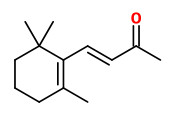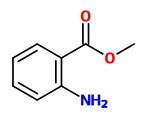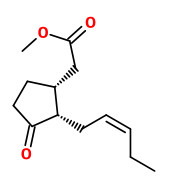Magnolia champaca (L.) Baill. ex Pierre - syn. Michelia champaca L. - Magnoliaceae
champak, Champaca, Champaka, Joy Parfümbaum
„It is best known for its strongly fragrant yellow or white flowers. It is, however, primarily cultivated for its timber, and is also used in urban landscaping. Its aril-covered seeds are highly attractive to birds… This species occurs in varying shades of cream to yellow-orange. In China, M. champaca var. pubinervia is documented. Magnolia × alba is a hybrid cultivar of M. champaca. In Thailand, there has been some purported man-made hybrids with other magnolia species including Magnolia liliifera and Magnolia coco.“ wikipedia
„The investigation of two commcercial concretes, one absolute and a lab-prepared concrete from the flowers of Michelia champaca L. has allowed the identification of a series of minor and trace constituents not yet know as natural products. GC/MS analysis of the concretes revealed the presence of more than 240 components. Some quantitative differences were found to exist between the components identified in the volatile part of each concrete. In the commercial absolute and concretes, the main constituents were phenylacetonitrile (1.2-4.5%), phenylethyl alcohol (25-34%), α- + β-ionone (1.0-5.0%), methyl anthranilate (2.1-9.0%), indole (2.9-12.0%) and methyl linoleate (10.0-18.0%). In contrast, the lab-prepared concrete contained linalool (11.0%), cis-linalool oxide (pyranoid, 7.0%), dihydro-β-ionone (10.0%) and α+ β-ionone (26.8%) as major constituents.“
[New volatile constituents of the flower concrete of Michelia champaca L. Kaiser, R., Journal of Essential Oil Research, 3(3), 1991, 129-146]
 2-phenylethanol |  β-ionone |  indole |  methyl anthranilate |  (+)-epi-methyl jasmonate (methyl cis-(Z)-jasmonate) |
„Its beautiful creamy-yellow flowers emit a very intense floral fragrance with fruity shades that might be verbally described as remiscent of orange blossoms, freesia, carnation, and jasmine in one, and which is strongly based on an accord generated by the interaction of β-ionone and derivatives, indole, methyl anthranilate, methyl jasmonate, and 2-phenylethyl alcohol…
Being aware of the diversity of this taxon, we often encountered a cream-white colored variety locally known as 'Bangalore champac' during our expidition. Its scent is milder than that of the more common variety, not as extreme in its ionone-indol-methyl anthranilate complex, but attractively equilibrated by comparatively high levels of methyl cis-(Z)-jasmonate [(+)-epi-methyl jasmonate] and 2-phenylethyl 2-methylbutanoate. The methyl cis-(Z)-jasmonate is accompanied in its variety of 'champaca' by methyl (Z)-2(3)-dehydrojasmonate… in contrast with the yellow variety, we could identify some less-common lipid metabolites such as methyl (Z,Z)-deca-4,7-dienoate, contributing a pear-like fruity shade.“
[Meaningful Scents around the World, Roman Kaiser, Zürich 2006, 171-172 and 243-244]
„Extraction of fresh flowers of Michelia champaca L. with pentane afforded the concrete in 1.5 ± 0.05% yield. Precipitating the waxes from the concrete with methanol gave absolute (80%). Distillation of the flowers in a Clevenger-type apparatus furnished the essential oil in 0.03% yield. The chemical composition of the concrete, absolute and essential oil were determined by GC and GC-MS and compared. The headspace volatile composition of flowers while still attached to the branch of the tree and after plucking was determined by solid phase micro-extraction on PDMS fibre and these results are also presented. Interestingly, the concrete and absolute contained a much smaller amount of sesquiterpene hydrocarbons, which constitute more than 60% in the headspace. Most of the esters present in the concrete and absolute are not present in the essential oil, which on the other hand contains several monoterpene hydrocarbons not isolated from the pentane extract. The sesquiterpenes detected in the headspace are present in the essential oil.“
[Composition of the concrete, absolute, headspace and essential oil of the flowers of Michelia champaca Linn., Rout, P. K., Naik, S. N., Rao, Y. R., Flavour and fragrance journal, Vol.21(6), 2006, 906-911]
„Extraction of the fresh flowers of Michelia champaca L. with liquid CO2 provided a floral extract in 1.0 ± 0.04 wt% yields. The extract so obtained contains far less waxes and is organoleptically very superior… The major fragrance compounds enriched in the direct liquid CO2 extract were methyl benzoate (11.5 ± 0.8%), phenyl ethyl alcohol (5.0 ± 0.6%), phenyl acetonitrile (10.4 ± 1.1%), indole (1.2 ± 0.3%), methyl anthranilate (1.3 ± 0.5%), (E)-β-ionone (1.5 ± 0.4%), and (Z)-methyl jasmonate (1.0 ± 0.3%).“
[Liquid CO2 extraction of flowers and fractionation of floral concrete of Michelia champaca Linn,
Prasant K. Rout, Satyanarayan Naik, Y. Ramachandra Rao, J. of Supercritical Fluids, Vol.56, (2011), 249–252]
„The chemical composition of the volatile compounds isolated by simultaneous distillation-extraction (SDE) and headspace-solid phase microextraction (SPME) from flowers of Michelia champaca growing in Cuba was investigated by GC/FID and GC/MS. Sixty-seven and thirty-four components were identified by SDE and SPME, respectively, with 1,8-cineole (22.8%) as the main constituent in the volatile oil isolated by SDE, and methyl benzoate (30.3%), indole (16.6%) and β-elemene (10.4%) the major components detected by SPME.“
[Baez, D., Morales, D., Pino, J. A., Volatiles from Michelia champaca flower: comparative analysis by simultaneous distillation-extraction and solid phase microextraction. Natural product communications, Vol.7(5), 2012, 659-660]
HS-SPME analysis of floral volatiles emitted by living M.champaca flowers showed (E,E)-α-farnesene (32.7%) as main constituent, accompanied by methyl benzoate (23.4%), germacrene-D (7.3%), β-elemene (5.7%) and phenyl acetonitrile (4.6%). Indole (3.5%), zingiberene (2.1%), methyl anthranilate (1.0%) as well as (E)-α-bergamotene (1.3%) and (E)-β-ionone (0.6%) contribute to the odor of the flowers.
[Analysis of floral volatiles by using headspace-solid phase microextraction: a review., Rout, P.K., Rao, Y.R., Naik, S.N., Asian J. Chem., Vol.24, 2012, 945-956]
Main components of a commercial 'Michelia champaca flower extract' (India/Essence Pur) were methyl linolenate (40.5%), methyl anthranilate (~10.4%), methyl linolenate (6.9%), methyl palmitate (5%), phenylethanol (3.2%), ethyl linoleate (2.9%), methyl oleate (2.8%), phenethyl benzoate (2.4%), methyl benzoate (2.3%), β-ionone (1.4%), α-ionone (1%), and phenylacetonitrile (1%).
[GC-MS of 'Michelia champaca flower extract' Essence Pur; Andreas Kraska 20210816]
„Odor Description: floral, exotic, rich, sweet, tea-like, fruity nuances. Champaca flower absolute is one of the most luxurious ingredients in the perfumer's palette. It's an essence with an incredibly complex and rich scent that adds depth to our compositions. The absolute opens with a strong, heady, and narcotic accent. After this intense introduction, it transitions into a beautiful phase reminiscent of exquisite jasmine tea. The scent projected at this stage is very strong, retaining a lightness while heavier notes from the opening disappear completely. In the final phase, the scent gradually fades, surprising with emerging fruity nuances.“ Champaca Absolute (red) Synthite/Perfumiarz retr. 20251107

Magnolia champaca as Michelia champaca, Blanco, M., Flora de Filipinas, t. 191 (1875)
plantillustrations.org

Magnolia champaca, Ciudad de Guatemala, Guatemala (2025) © Karen Hernández Esquivel CC BY-SA 4.0 inaturalist.org
